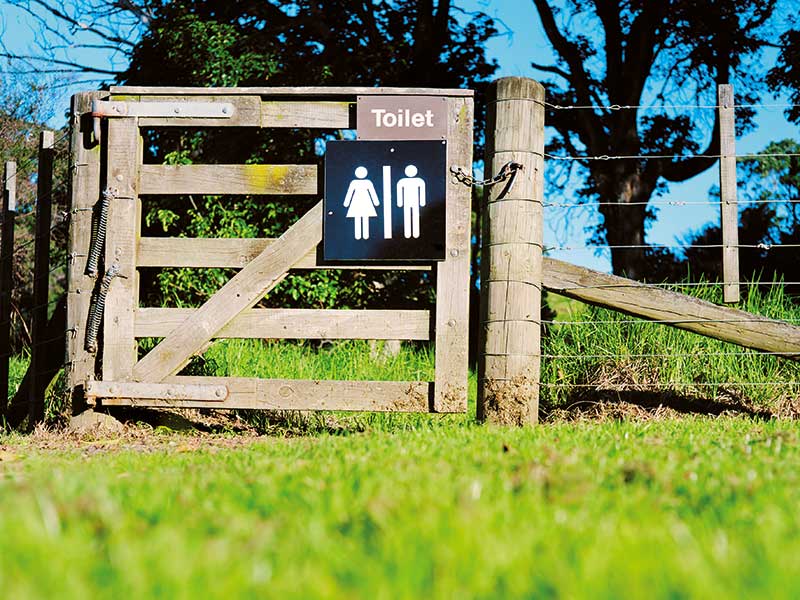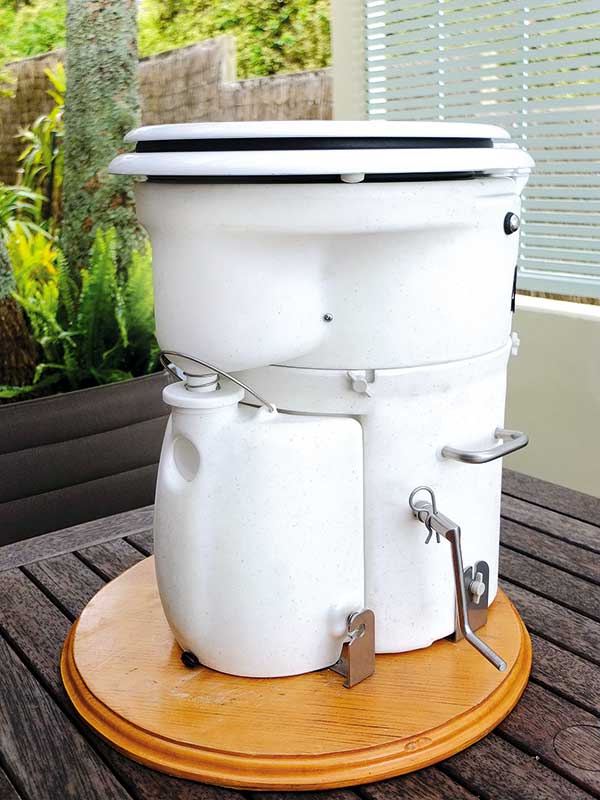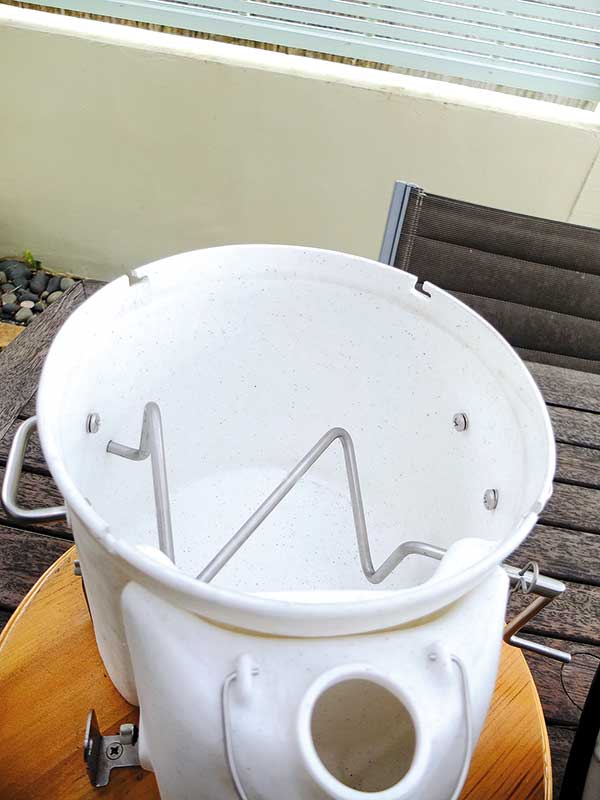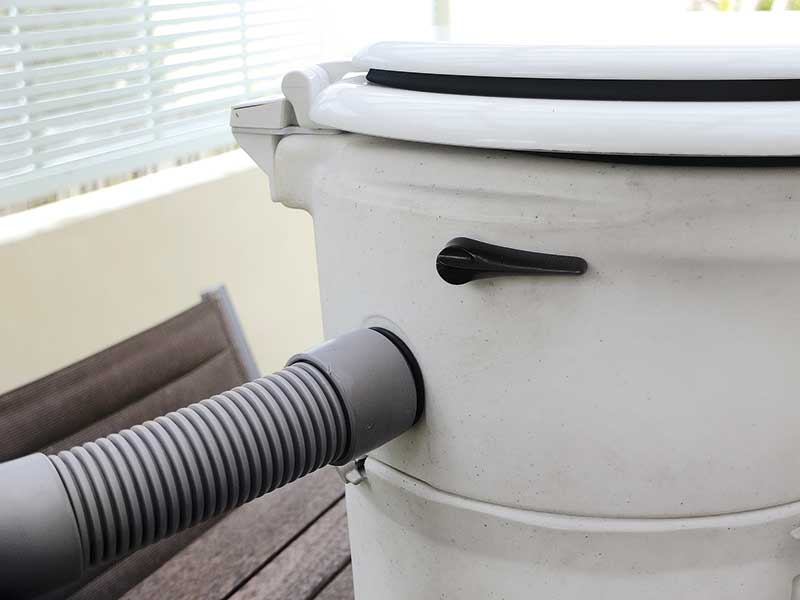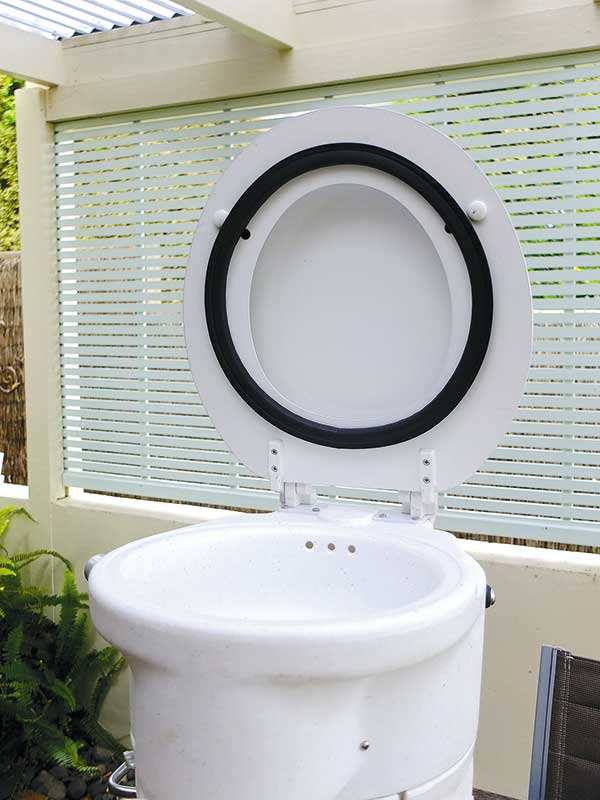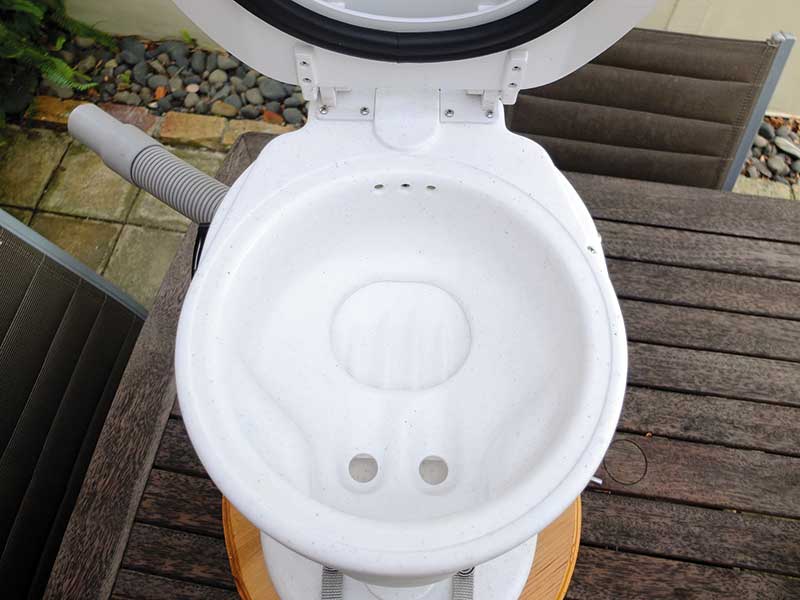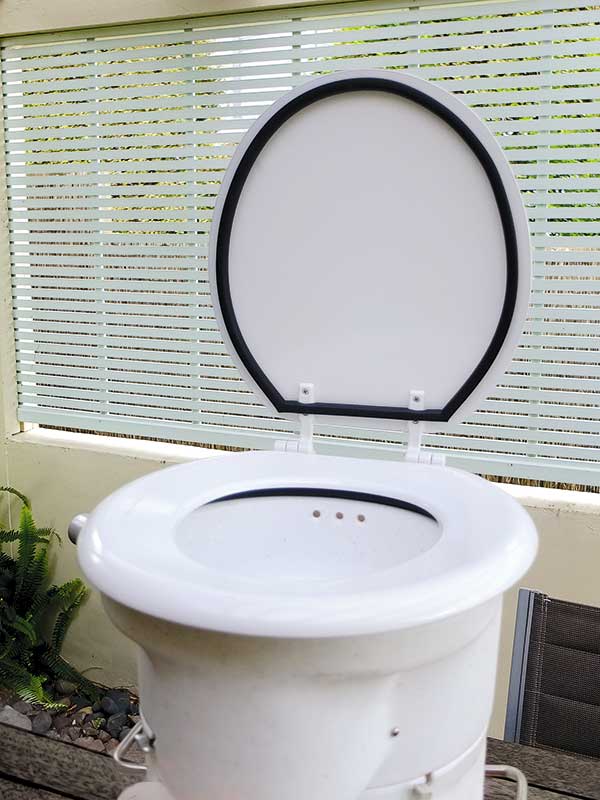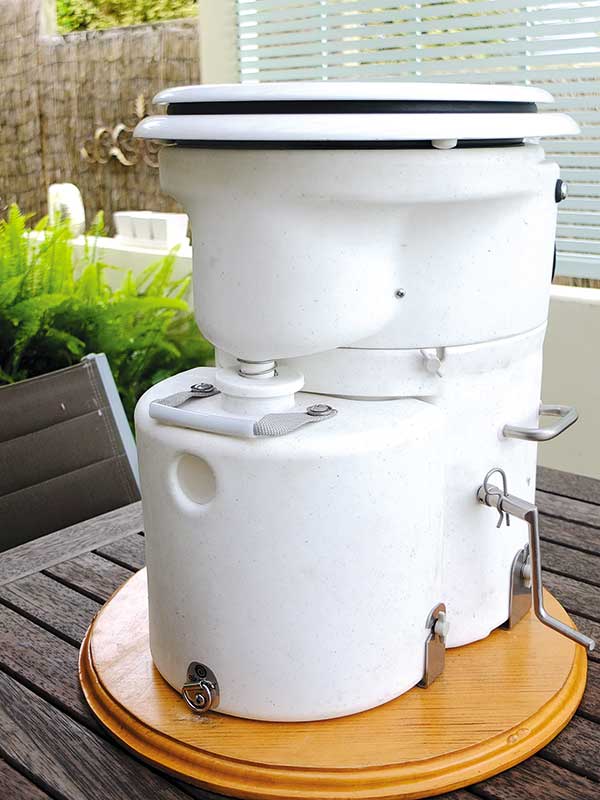Wikipedia describes a composting toilet as, “A type of waterless toilet system that uses
a predominantly aerobic process to treat human waste by composting. Typically, such systems use little to no water.”
It’s one thing to know the principle of how something—in this case a waterless toilet - works, but from a practical point of view, why would you consider using a composting toilet in an RV? The idea of composting inside a small habitation space sounds absurd.
Let us consider the ‘waterless’ part first. The majority of RVs have a cassette toilet drawing ‘flush’ water either directly from the fresh water tank or from a separate reservoir built into the toilet housing. Water saved by not needing to flush the toilet might extend freedom camping time a little but not by much.
However, excluding fresh water and urine from the waste composting container extends the time between container ‘empties’ significantly. That fact is of considerable interest to freedom campers.
On average, two people will fill a 19-litre toilet cassette in three days. But using a waterless toilet with a 19-litre waste-composting container, the same two people can use the composting toilet for a month before it needs emptying. And it’s not just the time between empties that is significant.
When emptying time comes around, the waste composting container contents are dry and granular in appearance and can be disposed of in different ways, none of which include a dump station. For example, it can go into a domestic compost bin or go out with the household rubbish. And it doesn’t have to be dealt with immediately. It can be bagged and stored on-board until a suitable opportunity for disposal presents itself.
A successful composting toilet incorporates three functions: separation, agitation, and aeration.
Separation
The separation of urine from human waste is essential for the composting process to work efficiently. It’s achieved by careful design of the toilet bowl. Two holes at the front of the bowl collect the urine and direct it into a separate 10-litre liquids tank. Two people can use the toilet three to four days before the liquids tank needs emptying. The urine can be disposed of into a toilet or into a soak pit.
Waste solids accumulate in the waste-composting container that forms the base of the toilet. The bottom of the toilet bowl consists of a large flap that’s opened before proceedings commence, allowing the waste material to pass through to the waste container below.
Placing an optional circular bowl liner of toilet paper (available from the toilet supplier) in the bottom of the bowl acts as a carrier for solid matter on its way through to the composting container and helps minimise post-use cleaning. However, if cleaning is necessary, the flap should be closed before cleaning commences so that cleaning fluids flow into the liquids tank rather than the composting chamber.
Agitation
The final act of each toilet session is the agitation of the contents of the waste composting container. This is achieved by rotating the handle on the side of the toilet three times. So instead of pushing a flush button, the handle is rotated to mix and aerate the waste material.
Aeration
To improve the aeration process, most composting toilets use carbon additives (sawdust, coconut coir, peat, or sphagnum moss) to create air pockets in the waste to improve the carbon-to-nitrogen ratio and reduce potential odour. The composting toilet system’s objective is to produce a hummus-like product that is odour-free, user-friendly, and safe for disposal.
Keeping air moving through the composting chamber also improves the composting process. This is achieved by fitting a vent pipe and extractor fan, supplied as part of the toilet kit, from the composting chamber to outside the RV.
John Tate—a waterless toilet owner I spoke to—uses sphagnum moss as his carbon additive. “I half-fill the waste container with sphagnum moss, and this enables me to use the toilet for a month or more,” he says.
“I can tell when it’s ready to empty because the agitation handle gets harder and harder to turn. When I detach the waste container from the toilet, it’s still only half full. There are no unpleasant smells at all, just an earthy smell like a freshly dug garden. The composting process has reduced the contents to granular state, not unlike gravel. It’s amazing.”
It turns out the idea of composting inside a small habitation space is not at all absurd. There are two composting toilets suitable for fitting into RVs available on the New Zealand Market: Nature’s Head (natureshead.net) and Airhead (airheadtoilet.com).
The images and descriptions used in the article are of the Airhead composting toilet. Thanks to John Tate of Airhead for his expert guidance on this subject.


